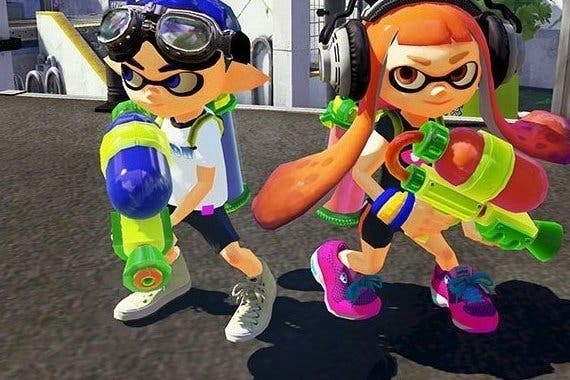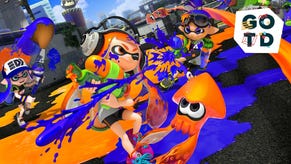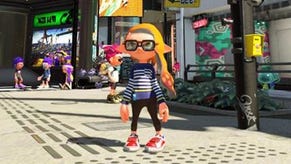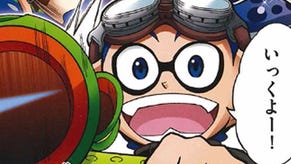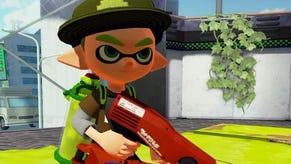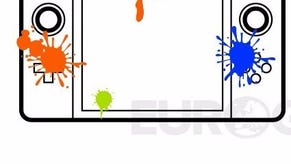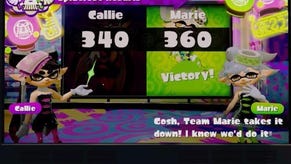Nintendo's bright future with Splatoon
And making sushi with Tsubasa Sakaguchi.
If you're searching for the new generation of talent within Nintendo, you needn't look much further than Tsubasa Sakaguchi. They certainly don't come much more youthful that the co-director of Splatoon, Nintendo EAD's first all-new character led game in 14 years; when we meet in a sushi house in Soho he bristles with a child-like energy and enthusiasm, his long hair tied back and his bright yellow Splatoon-themed t-shirt shining as brightly as his smiling eyes. You can sense so much of that energy in Splatoon too, a game that dances to the rhythm of youthful exuberance. New beginnings don't come much more convincing than this.
Sakaguchi's hardly new to Nintendo, though - his first credit with the company came as a character designer in 2006's Twilight Princess - and he's been well schooled in the way of Nintendo's EAD, learning the lessons of Shigeru Miyamoto. And so while the characters in Splatoon might be new, as are many of the mechanics, the craft is typical of Nintendo. If you want an oversight into the processes behind the creation of Nintendo's games, and the constant iterations that take place before we ever get to play them, there's no better place to look than one of the final Iwata Asks, carried out earlier this year, that goes into the genesis of Splatoon. "The way that Miyamoto and EAD make games, the idea comes not from the design, but from the function," observed Nintendo's late president Satoru Iwata. "The design comes after."
It's that one moment, and that one mechanic that spirals out to make a game, in other words; in Mario it's the joy of movement and momentum, and in Splatoon's case it's the simple, messy pleasure of throwing paint around. From there, it's the detail in design where you'll find much of the game, and Splatoon's eye for detail is as good as anything I've seen come out of Nintendo. Sakaguchi came up with the idea of having squids in the game - at first it was simply blocks of tofu spraying ink at each other, before they slowly evolved into rabbits - and it's that introduction that ties all of Splatoon together with a strange yet consistent logic. It makes for a game that's been hard to categorise.
"Splatoon, of course, has many elements of a shooter, but it didn't start off with us wanting to make a shooter game," explains Sakaguchi. "It was more that we found fun in colouring in vast areas and spaces around us, and as part of that visualisation of the movement of the characters we found really exciting, and this is how the project started. We've got many programmers in the team who aspire to this, and my co-director, Mr. Amano - especially him - he really wanted to create a co-op game. I love games where I can move freely within the 3D space, and this led to the characteristics of the squid that you see in Splatoon. With the ZR you shoot, and with ZL you turn into the squid - this game, for me, has shooter elements and action elements in that sense. The user goes back and forth between these two genres. When we discovered the potential with this mechanic, we decided this was going to become the core of the game. The action elements - the colouring in and the swimming - the common denominator there, it's the ink."
I love how meticulously the game's concept's been applied, and how Sakaguchi's study of squids informs Splatoon in surprising, delightful ways: the multi-coloured ink, the way they can leap out of it and their ability to communicate with one another all take their inspiration from this most fascinating of sea creatures. I love how its world charmingly pulls in facets of marine life and playfully repurposes them: take Spike the sea urchin, who true to another meaning of his name, impishly sits in a back alley selling the player ill-gotten goods. I love how Splatoon's story paints a post-apocalyptic picture in a typically cheery Nintendo way that subtly carries an eco-friendly, anti-consumerist tale, of how humans got washed under the rising seas and the squids that took to the land and inherited the earth afterwards are making the mistake of succumbing to their own appetites.
Most of all, I just love how it plays, and how it feels to play, something that's down to how Sakaguchi and his team studied human anatomy just as closely as they studied squids. "Humans can move our hands less when we're moving them downwards, and more when we move it upwards," Sakaguchi says, motioning with his wrist. "When we were doing the mapping for the gyro sensor, we incorporated these subtle human movements into the game. It might not be apparent at first glance, but maybe you might notice it in the future. Another thing is that since the release of the Wii U, Nintendo has experienced and learnt a lot regarding player controls, especially for the gyro sensor, and we've been able to learn from that and incorporate a lot into Splatoon."

The gyro control's been so well executed I always think it's a bit of a shame when you hear about players bypassing it for more traditional twin-stick controls. "We were slightly concerned about whether users might feel the gyro controls were a little bit difficult," says Sakaguchi. "But I like to use the analogy of riding a bicycle. You need a lot of practice, but once you've learnt that the bicycle becomes one with your body and it opens the whole world to you. In that sense, we're really happy that many users have learnt to ride the bicycle!"
"About 70-80 per cent of players are using the gyro controls. That's not to say we're forcing it on to them. From our point of view, we think that the gyro controls are the best way to play Splatoon, the reason being there are two main movements you need for a shooter. One is moving the body, the other is aiming where you're shooting. In that sense, we think for Splatoon the gyro gives that subtle movement and more precise actions to be able to really experience the game in a much better way."
The execution helps hide the fact that Splatoon is a very strange game, but it's one that's been warmly embraced. The servers remain busy, and judging by the names that crop up during matches it's gone down extremely well over here as well as in Japan, where it's helped give the Wii U something of a boost. "We've been surprised by the fast learning curve and how much everyone's achieved so far. There was a lot of adjusting of the player mechanics in Splatoon, and we played it until the c-stick on the gamepad was invisible. I'm extremely surprised that one week after the release, there were many players who surpassed my skills."
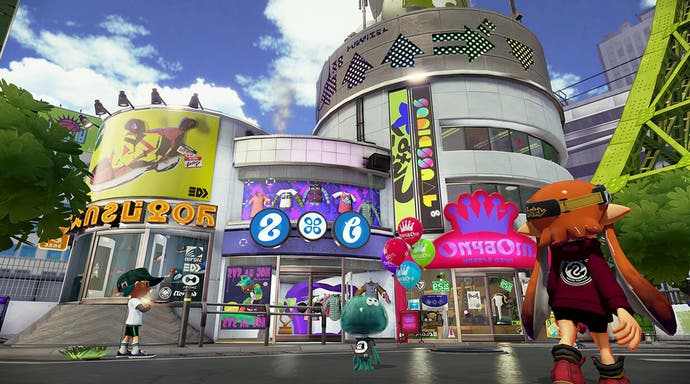
In that first week, players weren't only surpassing the skills of the development team - they were rushing through to the level cap, with a good handful reaching it in the first weekend. "When we were designing Splatoon, reaching level 20 was going to take quite a lot of time," says Sakaguchi. "Learning the game mechanics with the gyro sensor - we thought that would take a lot of time. In that sense we're surprised that people have reached the level cap in such a short time. We're actually really worried about those people - worried that they're still sleeping and eating! We recognise that a lot of people have reached level 20, and that there's not much left to do in the game. There's not much I can announce today, but I hope you can look forward to some future announcements."
What's kept people playing well after hitting Splatoon's low ceiling is the drip-feed of new weapons and maps, regularly dropping on a weekly basis - and the occasional Splatfest events that turn the plaza into a nocturnal, neon carnival, and where players pick two sides of a whimsical war to fight for. Pop or rock? Cats or dogs? Eating or sleeping? "Since I'm in London," says Sakaguchi, "it'd be cool to do a Splatfest for Oasis fans or Blur fans!" Splatfests are carried out on a three-week rotation, Sakaguchi says - though there's some wriggle room in there - and the next big update comes in August. As outlined in a recent Nintendo Direct, it'll introduce party matchmaking and custom games. What happens after that, though? "At the moment, we're not planning any paid download content. Beyond August, there'll be new stages and new weapons slowly being released."
And beyond even that? The reception afforded Splatoon suggests it's got a future, and it's one that Nintendo and Sakaguchi seem keen to invest in. "We're extremely happy about the response we received from everyone, but we feel it's just the start. Splatoon, our main goal, is for the people who are currently playing, when they become adults, to pass it on to their children." I'm happy for the kids of the future, but I'm just as delighted that there'll be more Splatoon to play further down the line.
